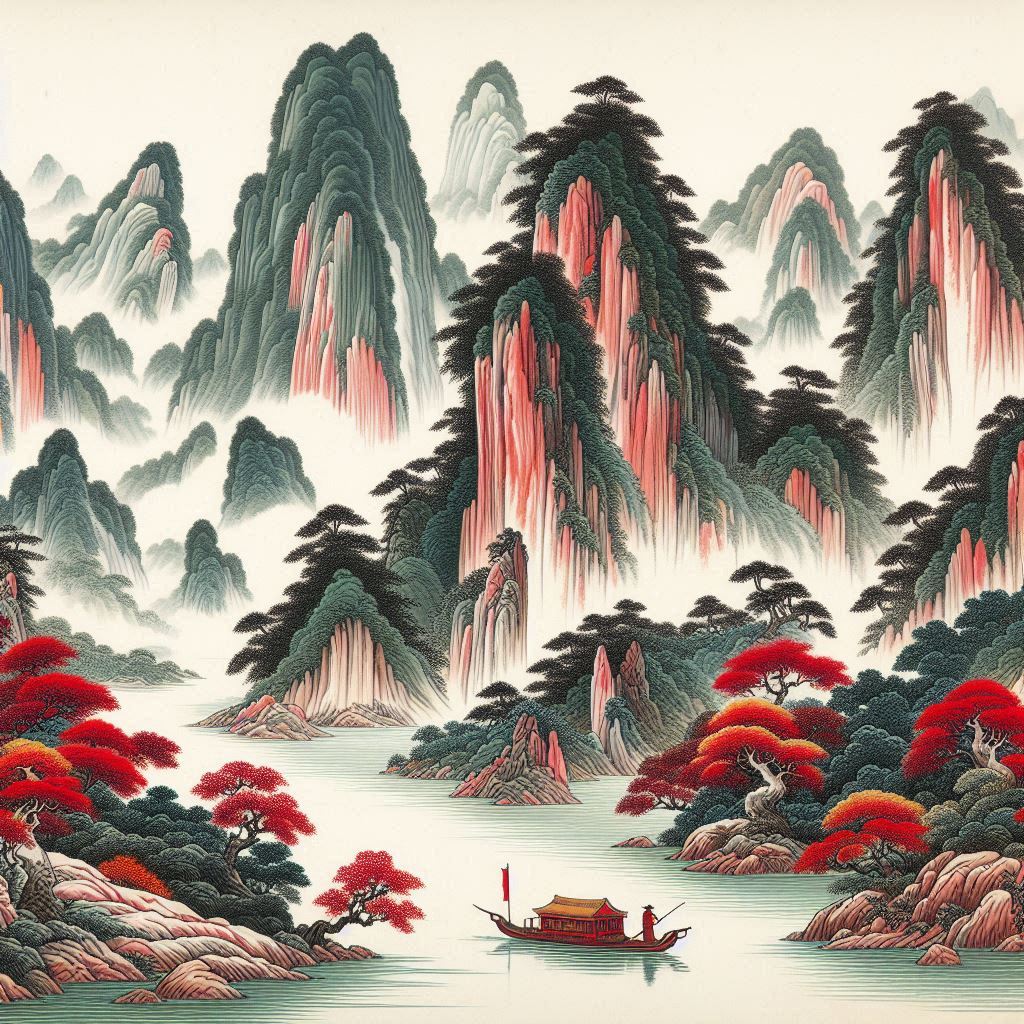Note: In traditional Chinese medicine the concept of the Spleen differs from the understanding of the spleen in Western medicine. In TCM main function of the Spleen is the transformation of food into "food essence". The symptoms of an imbalanced Spleen point to imbalance in the digestion. So in order to avoid confusion whenever we refer to the Spleen in this project we will consider the collective work of some organs and systems that participate in the transformation and transportation of nutrients and fluids, rather than solely focus on the organ spleen as defined in Western science(1).
Cause
- Spleen Qi deficiency
- living in damp environment
There are two causes that lead to the generation of “dampness in the Spleen”. The first cause is deficiency of Spleen Qi.
In TCM the Spleen is responsible for transforming the food into "food essence" and transporting it throughout the body, but together with the Lung and the Kidneys, the Spleen also governs the body's water metabolism. It is in charge of the separation, transportation, and movement of fluids. If the Qi of the Spleen is deficient it cannot sufficiently transport fluids. Eventually this will lead to the generation of “internal dampness”(1).
The other cause for generating "dampness in the Spleen" is living in a damp environment(2)(3)(4).
Symptoms
- feeling of heaviness in the body
- cloudy head
- cloudy urine
- edema or swelling
- bloated abdomen
- loose stools
- lack of appetite
- numbness in the limbs
- bacterial and yeast overgrowth
- cold-damp symptoms - oppression in the chest and epigastrium, feeling of cold in the epigastrium, vaginal dyscharge in women, lack of thirst
- damp-heat symptoms - loose stool with offensive odor, scanty dark-yellow urination, thirst with no desire to drink, nausea, vomiting
Dampness is heavy and turbid in nature. Thus symptoms of internal dampness manifest in feeling of heaviness in the head and body(2)(3)(4), cloudy head, cloudy urine. As "dampness" is accumulation it manifests with edema and swelling. Other symptoms include bloated abdomen, loose stools and lack of appetite(2)(3)(4) (the major symptom of deficient Spleen).
There are two types of internal dampness – cold-damp and damp-heat. Cold-damp symptoms include all the above symptoms of internal dampness together with oppression in the chest and epigastrium(2)(3), and/or feeling of cold in the epigastrium(3). Dampness is heavy in nature, thus dampness has the tendency to sink downwards, manifesting in vaginal discharge in women(3)(4). As dampness is excess water in the body there is no desire to drink thus there is no sensation of thirst(3)(4).
Damp-heat symptoms include all the above symptoms of internal dampness together with stuffiness or pain in the epigastrium and lower abdomen(2)(3), loose stool with offensive odour(3) (when there is heat there is odour), and scanty dark-yellow urination(2)(3). As heat manifests in thirst but with dampness there is no thirst an interesting sign of damp-heat is thirst with no desire to drink. Some nausea and vomiting may be present.
Besides having a heavy and turbid nature dampness is also obstructive. Thus dampness blocks the free flow of blood and Qi, and invades the joints. Movement becomes difficult and there is numbness in the limbs. The pain is fixed in location. The condition worsens in damp environment or in cloudy and rainy days.
Just like bacteria and parasites thrive in an external damp environment so do they do in an internal damp body environment. Therefore chronic internal dampness may lead to bacteria and parasite overgrowth, and is the fittest environment for yeasts, viruses and bacteria. Internal dampness is also more difficult to clear because of its heavy nature, and it takes longer time to cure.
Treatment Approaches
Internal dampness originates from a "deficient Spleen" therefore changing the diet is essential in treating this condition.
Foods that contribute to accumulation of dampness are all “cold” and mucus-forming and should be avoided until the dampness is cleared. Such foods are raw foods, as well as eggs, milk, and dairy products (mucus-producing), sweet foods (the sweet taste tonifies the Qi of the Spleen but taken excessively has the opposite effect). Fats, oil, butter, nuts, seeds, and all fried foods should also be avoided, meat should be consumed moderately, in small quantities, and very well cooked. The meals should be simple with not too many spices or ingredients. Overeating and late-night eating should be avoided.
Foods that particularly dry dampness are bitter foods.
To unlock the rest of this article select "Yes, I want to learn!" below.

Food therapy is the most economical and non-toxic biochemical approach to health and disease. Food is something we continuously use to sustain our lives. Learning what foods are healing (and what disruptive) for each condition has the potential to convert every meal into a form of therapy.
YS
(1) Zhang, Enqin (1990). Basic Theory of Traditional Chinese Medicine. Shanghai: Publishing House of Shanghai College of Traditional Chinese Medicine
(2) Deng Liangye, Gan Yijun, He Shuhui, Ji Xiaoping, Li Yang, Wang Rufen, Wang Wenjing, Wang Xuetai, Xu Hengze, Xue Xuiling, Yuan Jiuling (1987). Chinese Acupuncture and Moxibustion. China: Foreign Languages Press
(3) Maciocia, Giovanni (1989). The Foundations of Chinese Medicine. Edinburgh: Harcourt Publishers Limited
(4) Yang Weiyi, Meng Fanyi, Jiang Yuanan(2002). Diagnostics of Traditional Chinese Medicine. Beijing: Beijing University of Chinese Medicine and Pharmacology
(5) Pitchford, Paul (2002). Healing with Whole Foods. Berkeley: North Atlantic Books
Related Articles:
The Spleen and the emotion pensiveness
The Spleen, the season late summer, and foods during late summer that benefit the Spleen
Herbs that treat dampness and benefit dampness in the Spleen
Herbs that clear heat and dry dampness
Herbs that tonify Qi and benefit Spleen Qi deficiency
Please read our Disclaimer









